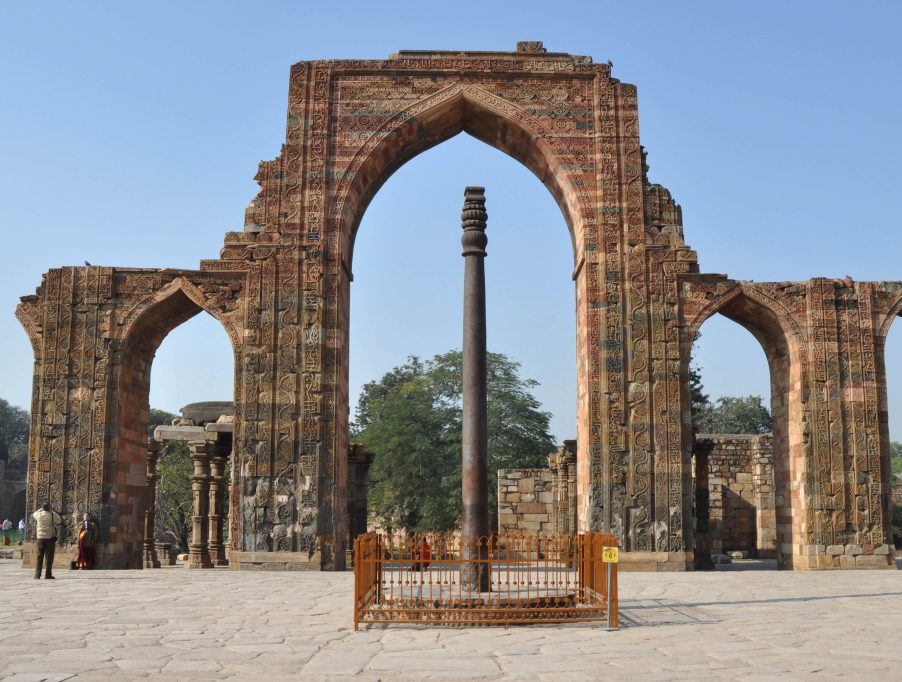The Iron Pillar of Delhi is a nearly 24-ft. iron pillar that is located in the Quwwat-ul Mosque. It weighs more than 6 tons and is made of 98% wrought iron.
The pillar is ornate, but hardly awe-inspiring, unless one knows just how long and mysterious the history of it is.
The Quwwat-ul Mosque dates back to 1192. It stands around the Iron Pillar in ruins today. The Iron Pillar dates back even further than the ruined Islamic building, which surrounds it, It was forged 1,600 years ago (sometime in the 300s) and moved to Delhi roughly 1,000 years ago, before the mosque was built.
According to a popular translation of the Brahmi script upon the Iron Pillar of Delhi, the pillar was made for a king (presumably Chandragupta Vikramaditya, given the era of its creation). It was also made to honor one of the most important Hindu gods – Vishnu.
The iron pillar is testimony to the high level of skill achieved by ancient Indian iron smiths in the extraction and processing of iron. The iron pillar at Delhi has attracted the attention of archaeologists and corrosion technologists as it has withstood corrosion for the last 1600 years.
Several theories have been proposed to explain its superior corrosion resistance: environmental and material.
Proponents of the environmental theories state that the mild climate of Delhi is responsible for the corrosion resistance of the Delhi iron pillar. It is known that the relative humidity at Delhi does not exceed 70% for significant periods of time in the year, which therefore results in very mild corrosion of the pillar.
On the other hand, several investigators have stressed the importance of the material of construction as the primary cause for the pillar's corrosion resistance.
The ideas proposed in this regard are the relatively pure composition of the iron used, presence of Phosphorus (P) and absence of Sulphur/Magnesium in the iron, its slag-enveloped metal grain structure, and passivity enhancement in the presence of slag particles.
Like so many other mysterious objects, the Iron Pillar is not giving up its secrets easily and some, sadly, may be lost to time forever.
